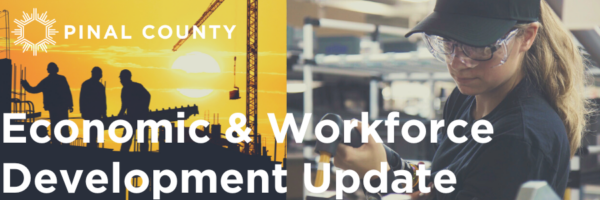
FOR IMMEDIATE RELEASE
July 6, 2020
The Monday Morning Quarterback
A quick analysis of important economic data released over the last week
It was a short week but one with lots of economic news. On the 4th, President Trump signed legislation that extends the deadline for businesses to apply for aid under the Paycheck Protection Program (PPP) to August 8th. There is roughly $130 billion left unused at his time. As for the follow-up to the CARES Act, negotiations are just beginning. It will be the usual contentious process. The follow-up should be based on economics, not politics. In addition, hopefully most of the perverse incentives to work will be removed. If not, it will almost guarantee that the economy will have a more difficult time than necessary. But, this being an election year, a follow up program that gets money to American workers, both the employed and unemployed, is almost assured.
In the near term, the necessary reclosure of many of the parts of the economy that were just recently reopened will hurt what has been a strong employment recovery. As was discussed last week, it is time for those who don’t wear masks, social distance, or avoid crowds (as in bars, parties, etc.) to realize that these things will be necessary until we figure out how to live in the post COVID-19 world.
It won’t be easy. It will take more than a vaccine. It will take something that will mute the effects of COVID-19. Most flu vaccines are about 40%-60% effective. If two-thirds of the population get vaccinated once a vaccine is available, that means that only about 40% of the population will be safe. Combine that with those who had the disease and, hopefully, developed antibodies that will last for a while and you still have a large percentage of the population that can get it. As we have pointed out before, if you’re under 55 and without other issues taxing your immune system, you’re probably ok. But, if you’re older and have other health issues, it’s going to be dicey.
But life will go on. It will have to, at some point, be regarded as another risk of living. The point is that exactly how this plays out remains to be seen. But, as of now, be cautious and play by the rules. Realize that life has changed in the post-COVID-19 world, at least for now. Hopefully, we will learn and the run up in new cases will quickly be brought under control. It appears that deaths, while still too high, are declining in most places. And hospitalizations for COVID-19 (as opposed to with COVID-19) are likewise controllable. But, for the economy to reopen and begin to function with any sense of normality, rules that did not exist prior to the virus will have to now be considered normal. They will benefit us all.
Employment figures that were released last week show that the economy does have the ability to show rapid progress. The economy added 4.8 million jobs in June (prior to several states placing shutdown restrictions back in place). That followed an increase of 2.7 million jobs in May. While jobs are still down 14.7 million since February, the 7.5 million total jobs regained in May and June was impressive. Most of the May and June job gains were in the industries that lost the most jobs in March and April (more to follow on that). In addition, the unemployment rate declined 2.2 percentage points. And there is still lots of room to recover. The employment to population ratio in June was 54.6%. That’s way down from 61.1% in February. So, there’s still lots of slack out there. But, with the re-closure of parts of the economy just reopened in May, those numbers are ancient history. July, at the moment, does not look promising. Beyond July, it depends on how many young Gen-Xers, Millennials, and Gen Zs act responsibly
In other economic news, consumer confidence was up but still way below year earlier levels. The ISM’s manufacturing index was up to levels that show expansion in that sector. Construction spending was up, though modestly, from a year ago. Mortgage applications were down modestly. And the National Association of Realtors pending homes index was way up for the month but modestly down from a year ago. Still, it was a good sign. In Arizona, initial claims for unemployment insurance were still high. And activity at Sky Harbor, while up from April, was still way down from a year ago.
Nationally, hotel occupancy increased to 46.2% last week. That’s up from 43.9% the preceding week but is still down 38.8% from a year ago. TSA traveler throughput rose to 3,967,161 last week. That’s way up from a month ago but still down 78.3% from a year ago. Slow but steady progress. Locally, seated diners in the state were down 59.1% from a year ago. In Greater Phoenix, they were down 66.8%. Business applications were up from a year ago. Mobility to the workplace in Arizona was down 30.6% from a year ago. The week before last, it was down 29.7%. This indicator is going in the wrong direction. Mobility to retail and recreation places is also moving in the wrong direction. This is the expected effect of the higher COVID-19 numbers. It will get worse now that bars and other venues are again closed.
It continues to be a long and winding road.
U.S. Snapshot:
- Initial claims for unemployment insurance fell slightly to 1,427,000 for the week of June 27th. That compares to 1,482,000 for the prior week. Last week’s number was 542.8% above year earlier levels. Since the middle of March, over 48 million Americans have had to file for unemployment insurance. Late June’s rise in COVID-19 cases will not only keep initial claims elevated, it will exacerbate the uncertainty plaguing the economy and make business owners think twice about hiring decisions.
- Employment posted a strong rebound in June. The economy added 4.8 million jobs. This was moderately above expectations. The largest gains were in the industries that had suffered the largest losses in March and April. Leisure/hospitality accounted for 40% of the job gains(2.1 million). Retail trade added another 740,000 jobs. Educational and Health Services added another 568,000 jobs. Other Services, Manufacturing, Professional and Business Services and Construction also had a good month. June’s gain, combined with the 2.7 million jobs gained in May, accounted for 33.8% of the jobs lost in March and April. This was a good start and indicated the underlying demand that was in the market for jobs. Unfortunately, given last week’s reclosures of businesses that are crowd oriented, the July numbers are not likely to look good. Until the great majority of the population follows the “How to Live with COVID-19” rule book, it will be difficult for the economy to build up steam. Look for a drawn-out recovery.
- The unemployment rate in June fell to 11.1% from 13.3% in May. This was clearly a movement in the right direction. But, July is likely to reverse course. It could be 2023 before the economy gets back to full employment.
- The Conference Board’s Consumer Confidence Index improved from 85.9 in May to 98.1 in June. But, that compares to 124.3 a year ago. So, while consumers believe that economic conditions will improve, the gains are expected to leave the economy far short of year ago levels.
- The ISM’s Manufacturing Index rose from 43.1 in May to 52.6 in June. A year ago, the index was 51.6. Any reading above 50 indicates the manufacturing sector is expanding. And while that sector is down a long way from its February level, it did expand off the bottom. Indeed, manufacturers’ new orders increased by 8.0% last month even though it was down 15.8% from a year ago. July could be more problematic.
- U.S. construction spending in May fell slightly below expectations. Total construction spending was down 2.1% from April but was up 0.3% from a year ago. Residential construction is expected to be largely unchanged for the year. Non-residential construction is expected to be weak for rest of the year. The drop is likely to be very modest. This assumes that the $1.5 trillion Moving Forward Act does not become law this year.
- National Association of Realtors home sales index rose sharply in May to 99.6. This compares to 69.0 in April and 105.0 a year ago. According to the NAR, this has been a spectacular recovery in contract signings. More home construction is needed to counter the persistent underproduction of homes over the past decade. NAR expects existing home sales to reach 4.93 million units in 2020 and new home sales to hit 690,000 units this year. Both are expected to increase by almost 20% in 2021. These forecasts seem optimistic given current events.
Arizona Snapshot:
- Initial claims for unemployment insurance in the state increased to 27,450 for the week of June 20th. This compares to 25,866 the previous week. Last week’s number was 552.3% above year earlier levels. The 728,837 Arizonans who filed for unemployment insurance between the middle of March and last week represent 24.5% of those employed in March.
- Air traffic at Sky Harbor International Airport in Phoenix was 85.2% below year earlier levels in May. Total traffic of people who boarded and go off aircraft at Sky Harbor (enplanements and deplanements) was up from 282,243 in April to 584,283 in May. To give this some context, year earlier levels of deplaning and enplaning were 3,951,387.
About EDPCo
Elliott D. Pollack & Company (EDPCo) offers a broad range of economic and real estate consulting services backed by one of the most comprehensive databases found in the nation. This information makes it possible for the firm to conduct economic forecasting, develop economic impact studies and prepare demographic analyses and forecasts. Econometric modeling and economic development analysis and planning are also part of our capabilities. EDPCo staff includes professionals with backgrounds in economics, urban planning, financial analysis, real estate development and government. These professionals serve a broad client base of both public and private sector entities that range from school districts and utility companies to law firms and real estate developers.
For more information, contact –
Elliott D. Pollack & Company
5111 N. Scottsdale Rd, Suite 202,
Scottsdale, AZ 85250
480-423-9200 Website | Twitter | Facebook











